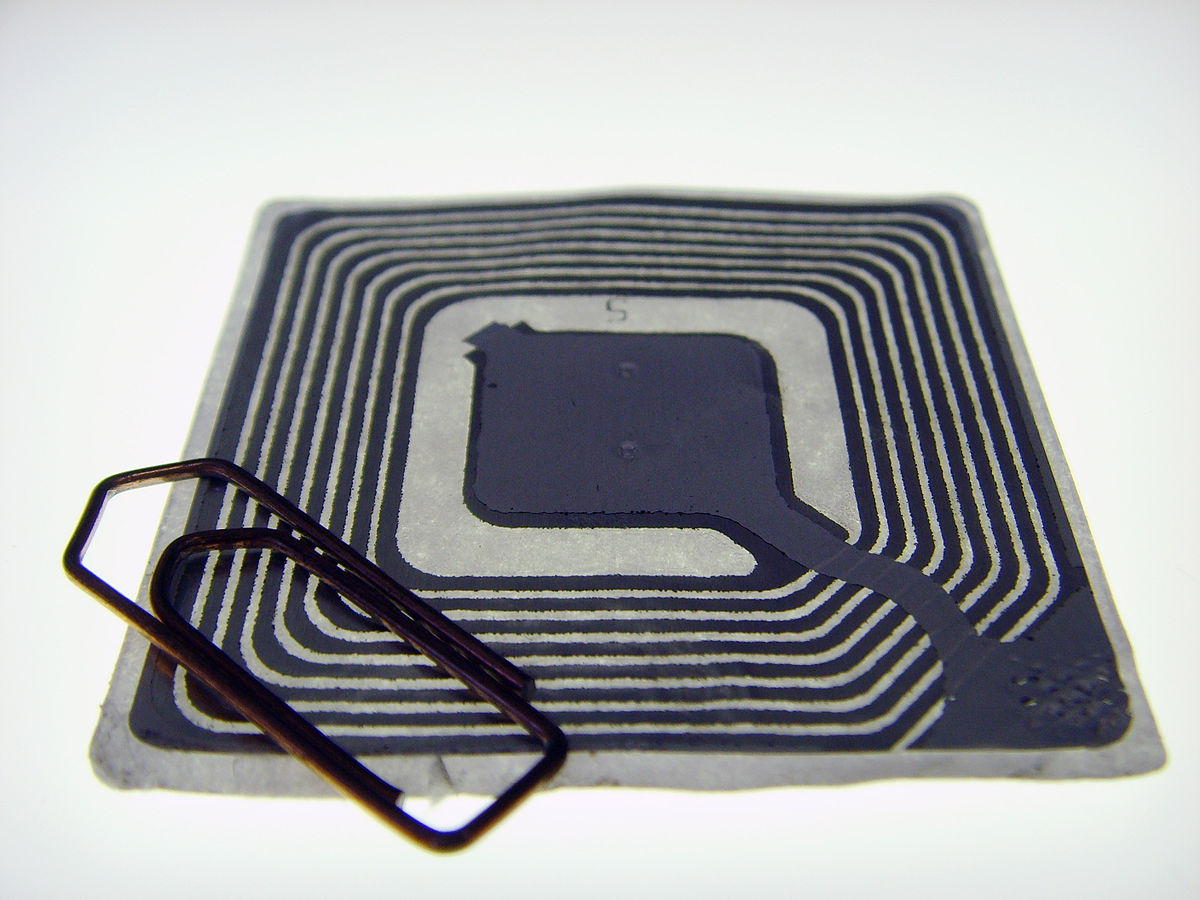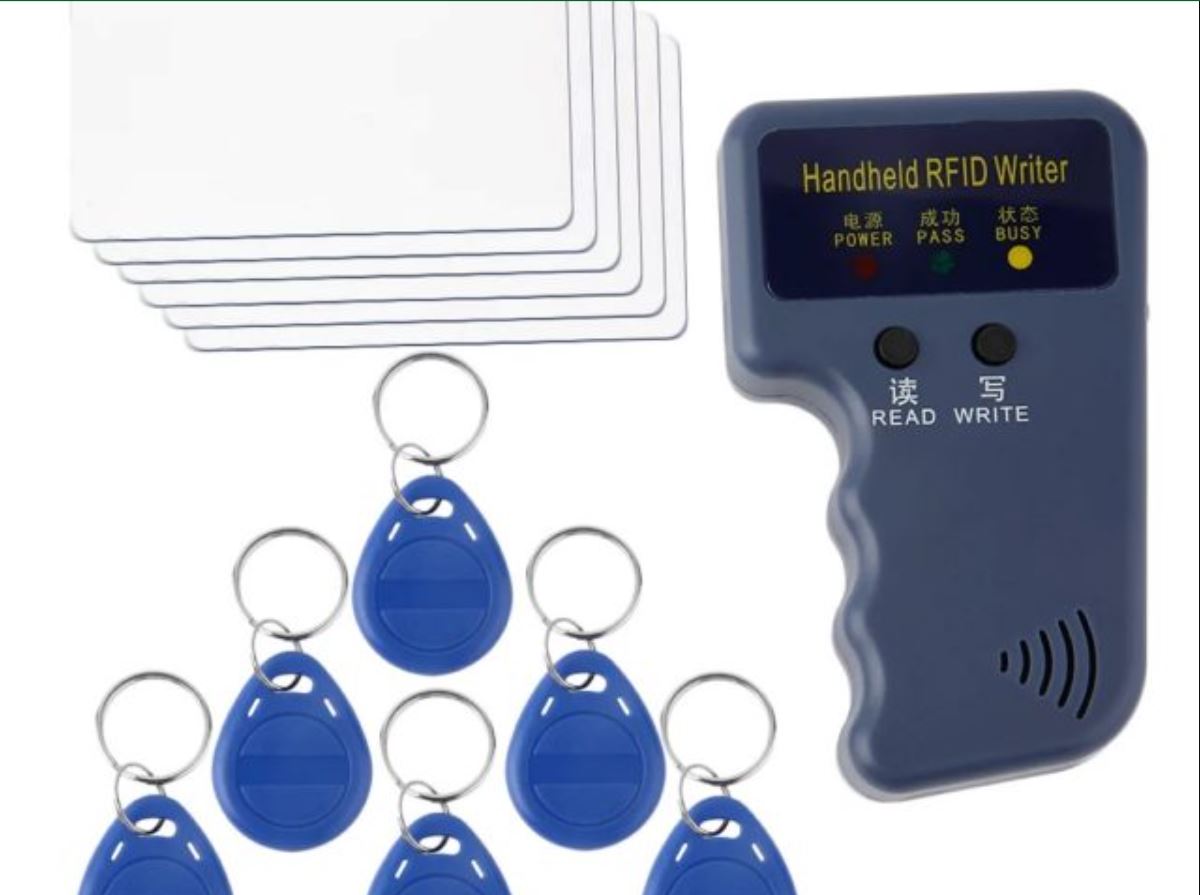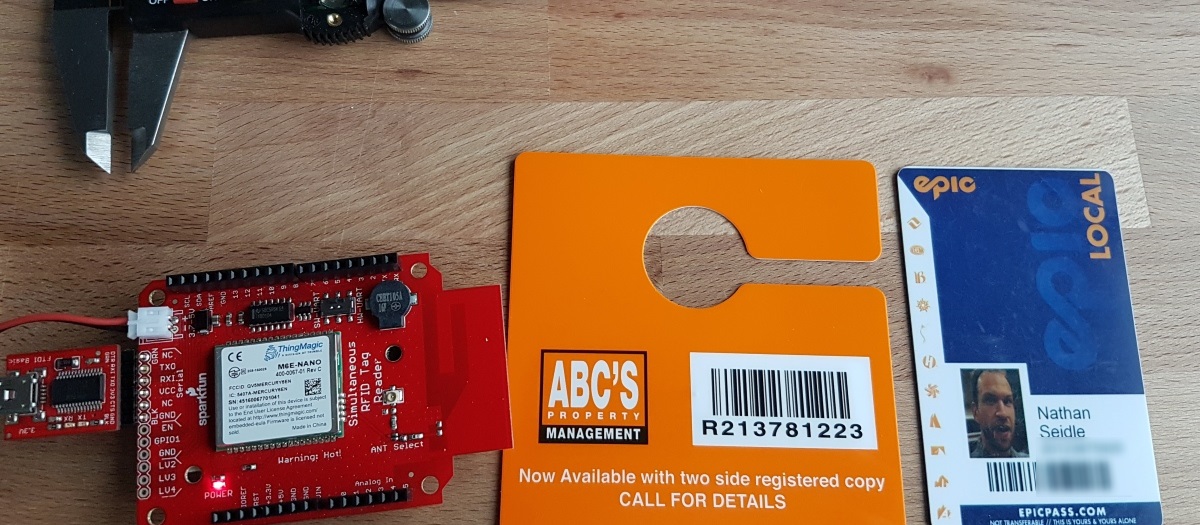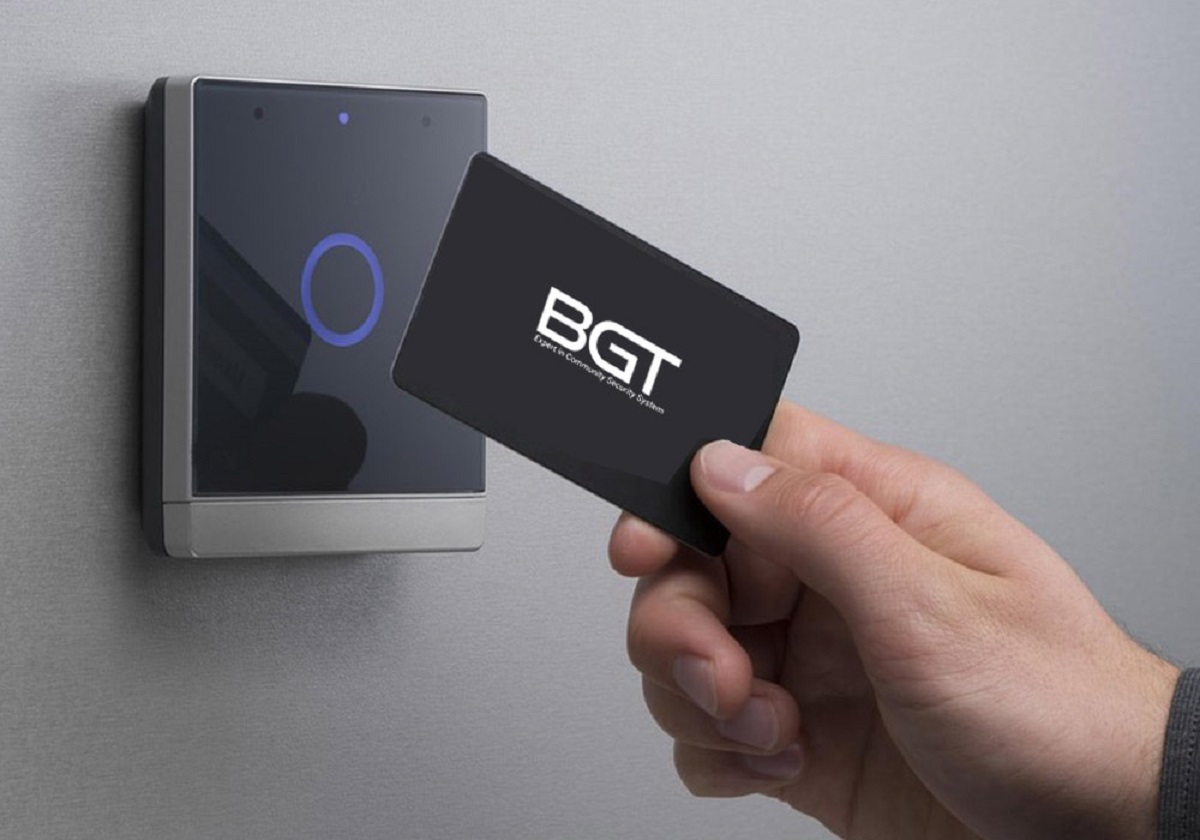Introduction
RFID (Radio Frequency Identification) tags are small objects equipped with tiny microchips that store and transmit data using radio waves. These tags have become increasingly popular in recent years due to their ability to track and identify objects in various industries, including retail, logistics, healthcare, and more. With the advancements in technology, RFID tags have become smaller, more efficient, and more affordable, making them a versatile tool in enhancing operational efficiency and optimizing supply chain management.
The use of RFID tags has revolutionized the way businesses operate by providing real-time visibility and accurate data capture. These tags are capable of automatically identifying and tracking items without the need for direct contact or line-of-sight scanning. This non-contact nature of RFID technology allows for seamless integration into existing workflows and systems, streamlining processes and eliminating human errors.
In this article, we will explore the history of RFID tags, how they work, their physical appearance, and the different types available. We will also delve into the various applications of RFID tags and discuss the benefits and limitations of using this technology. By the end, you will have a comprehensive understanding of RFID tags and how they have transformed industries.
History of RFID Tags
The concept of RFID technology can be traced back to the early 1940s, when Léon Theremin, a Russian inventor, developed a device called the “The Thing.” This device used radio waves to transmit audio surveillance from a covert microphone. While not a traditional RFID tag, it laid the foundation for the technology to come.
The true development of RFID tags, as we know them today, can be attributed to Mario Cardullo, an engineer and inventor, who in 1973 filed a patent for a passive identification system using radio frequency signals. Cardullo envisioned the potential of these tags in tracking and identifying inventory. However, it was not until the 1980s that RFID technology started gaining significant attention and research.
During the 1980s and 1990s, advancements in microchip and antenna technology paved the way for smaller and more efficient RFID tags. These tags were primarily used in applications such as access control, animal tracking, and toll collection systems. They proved to be reliable and effective in these use cases, leading to further research and development in the RFID industry.
In the late 1990s and early 2000s, RFID tags began to find wider adoption in retail and supply chain management. Companies recognized the potential of RFID technology in improving inventory management, reducing losses, and enhancing the overall efficiency of their operations.
Today, RFID tags have evolved to be highly versatile, with diverse forms and functionalities. They are used in various industries, including healthcare, manufacturing, transportation, and even in everyday applications like contactless payments and tracking systems in sports events.
The continuous innovation in RFID technology, coupled with reducing costs, has fueled its widespread adoption across industries. As we move forward, it is likely that the evolution of RFID tags will continue, presenting even more advanced and sophisticated solutions for businesses to explore.
How RFID Tags Work
RFID tags consist of three main components: a microchip, an antenna, and some form of packaging or enclosure. The microchip stores and processes data, while the antenna enables communication with the RFID reader. The packaging provides protection and can vary depending on the application and environment.
RFID systems typically consist of two main components: the RFID reader and the RFID tag. The reader generates an electromagnetic field that powers the RFID tag and initiates communication. When the tag enters the reader’s range, it receives energy from the electromagnetic field and becomes active.
There are two main types of RFID tags: passive and active. Passive RFID tags do not have an internal power source and rely on the energy emitted by the RFID reader to power the microchip. Active RFID tags, on the other hand, have their own power source and actively transmit data to the reader. This enables active tags to have longer read ranges and the ability to perform more complex functions.
When the RFID tag is powered, it begins to communicate with the reader using radio waves. The reader sends out a signal containing a specific frequency and data request to the tag. The tag receives this signal through its antenna and responds by transmitting its unique identification number or other stored data back to the reader. The reader then captures the transmitted data and processes it accordingly.
RFID tags can operate on different frequency bands, including low frequency (LF), high frequency (HF), and ultra-high frequency (UHF). The choice of frequency depends on the specific application requirements, such as read range, data transfer speed, and interference susceptibility.
One of the significant advantages of RFID technology is its ability to read multiple tags simultaneously. This is known as anti-collision technology, which allows for efficient inventory management and tracking. RFID systems can handle thousands of tags within range, making them suitable for high-volume environments.
In summary, RFID tags work by utilizing radio frequency waves to communicate with an RFID reader. The reader generates an electromagnetic field, which powers the tag and enables data transmission. The tag responds by transmitting its information back to the reader, which captures and processes the data as needed.
Physical Appearance of RFID Tags
RFID tags come in various shapes, sizes, and forms, depending on their intended use and environment. The physical appearance of RFID tags can range from tiny microchips embedded in labels or stickers to larger durable enclosures suitable for industrial applications. The packaging and form factor of RFID tags play a crucial role in their performance, durability, and integration into different objects or surfaces.
Passive RFID tags are often designed to be thin, flexible, and lightweight. They are commonly found in the form of adhesive labels or stickers, making them easy to attach to a wide range of objects and surfaces. These labels can be discreetly placed on items such as product packaging, assets, or even sensitive documents.
Active RFID tags, due to their internal power source, typically have a larger form factor. They often come in the form of battery-powered devices, which can be attached or integrated into objects or equipment. Some active RFID tags are designed to be rugged and withstand harsh environments, such as in construction sites or outdoor tracking applications.
Another type of RFID tag is the semi-passive or battery-assisted passive (BAP) tag, which combines passive and active characteristics. These tags have a small battery that helps boost the signal strength when communicating with the reader, allowing for longer read ranges and improved performance.
The physical appearance of RFID tags may also vary depending on the frequency at which they operate. For example, LF and HF RFID tags often have smaller form factors and shorter read ranges compared to UHF tags. The specific requirements of the application, such as read range and the need for direct contact or proximity, influence the choice of tag size and design.
In recent years, technological advancements have led to the development of ultra-thin or even printable RFID tags. These flexible tags can be embedded in or printed onto surfaces, enabling seamless integration into products, packaging, or even textiles without adding significant bulk or weight.
Overall, the physical appearance of RFID tags can range from small and discreet labels to larger, rugged enclosures. The selection of the appropriate form factor depends on factors such as the intended application, read range, durability requirements, and integration capabilities.
Different Types of RFID Tags
RFID tags can be categorized into various types based on their functionality, frequency, and form factors. Each type has distinct characteristics and is suitable for specific applications. Let’s explore some of the different types of RFID tags:
1. Passive RFID Tags: These tags do not have an internal power source and rely on the energy received from the RFID reader to operate. They are cost-effective, lightweight, and have a longer lifespan. Passive RFID tags are commonly used in applications such as inventory management, supply chain tracking, and access control.
2. Active RFID Tags: Active tags have their own power source, usually in the form of a battery. They can actively transmit data to the reader, allowing for real-time tracking and monitoring. Active tags have a longer read range and are suitable for applications that require frequent and continuous data transmission, such as tracking high-value assets or monitoring temperature-sensitive goods.
3. Semi-Passive RFID Tags: Also known as battery-assisted passive (BAP) tags, these tags combine the characteristics of passive and active tags. They have a small battery that helps enhance the communication range and performance of the tag. Semi-passive tags are often used in applications that require longer read ranges without the need for constant data transmission.
4. NFC Tags: Near Field Communication (NFC) tags are a specific type of RFID tag that operates in the high-frequency (HF) range. These tags are designed for short-distance communication and are commonly used in contactless payment systems, access control, and data exchange between devices with NFC capabilities, such as smartphones and tablets.
5. UHF RFID Tags: Ultra-High Frequency (UHF) tags operate in the UHF frequency range and offer longer read ranges compared to LF and HF tags. They are commonly used in applications that require high-volume and long-distance identification, such as inventory management in retail, logistics, and asset tracking in warehouses.
6. Rugged RFID Tags: These tags are specifically designed to withstand harsh environments, extreme temperatures, moisture, and physical stress. Rugged RFID tags are commonly used in industrial settings, outdoor tracking applications, or any environment where durability is crucial.
7. Printable RFID Tags: These tags are made with flexible materials that can be printed on using specialized RFID printers. Printable RFID tags are convenient for applications that require embedding or integrating the tags into assets, labels, or packaging without adding significant bulk or weight.
These are just a few examples of the different types of RFID tags available in the market. The choice of tag depends on factors such as the application requirements, read range, durability, and integration capabilities.
Application of RFID Tags
RFID tags have a wide range of applications across various industries, offering benefits such as improved efficiency, enhanced security, and accurate tracking. Let’s explore some of the key applications of RFID tags:
1. Retail: RFID tags are extensively used in the retail industry for inventory management and supply chain optimization. Retailers can track and monitor their inventory in real-time, reducing stockouts and ensuring accurate stock levels. RFID tags also enable efficient checkout processes, as items can be automatically identified and scanned without manual input.
2. Logistics and Supply Chain: RFID tags play a crucial role in supply chain management, enabling accurate tracking of goods throughout the entire supply chain. From manufacturing to warehousing and distribution, RFID tags provide real-time visibility into the movement of products, reducing errors and enhancing efficiency.
3. Healthcare: RFID tags are used in the healthcare industry for various purposes, including patient identification, medication management, and asset tracking. RFID tags attached to medical equipment or instruments facilitate quick and accurate inventory management, ensuring that the right equipment is available when needed.
4. Asset Tracking: RFID tags are an effective solution for tracking and managing assets, such as equipment, tools, and vehicles. By tagging assets with RFID, organizations can easily locate and monitor their assets, reducing loss, optimizing utilization, and improving maintenance schedules.
5. Access Control and Security: RFID tags are commonly used for access control systems. They provide a convenient and secure way to grant access to authorized personnel. Whether it’s an employee accessing a restricted area or a student using a smart card for entry, RFID tags ensure controlled access while maintaining security.
6. Livestock and Animal Tracking: RFID tags are widely used in agriculture and livestock industries to track and manage animals. These tags are attached to farm animals, pets, or wildlife for identification and monitoring purposes. RFID technology allows for efficient tracking, disease control, and accurate data collection for livestock management.
7. Smart Homes and Internet of Things (IoT): RFID tags can be integrated into smart homes and IoT devices to enable seamless automation and connectivity. For example, RFID tags can be used to trigger specific actions, such as turning on lights or adjusting temperatures, as individuals enter or leave a room.
8. Sports Timing and Event Management: RFID tags are used in sports events for accurate timing and tracking of participants. Timing chips attached to athletes’ shoes or race bibs ensure precise measurement of race results, improving the overall experience for both participants and spectators.
These are just a few examples of how RFID tags are applied in various industries. The versatility and efficiency of RFID technology continue to drive innovation and expand its applications in different sectors.
Benefits and Limitations of RFID Tags
RFID tags offer a range of benefits for businesses and industries, but like any technology, they also have their limitations. Let’s explore the advantages and drawbacks of using RFID tags:
Benefits:
- Improved Efficiency: RFID tags enable quick and automated data capture, reducing the need for manual scanning or data entry. This streamlines processes, enhances operational efficiency, and saves time.
- Enhanced Accuracy: RFID technology provides more accurate data capture compared to manual methods. The risk of human errors such as misreads or miscounts is significantly reduced, leading to better inventory management and data integrity.
- Real-Time Visibility: RFID tags offer real-time visibility into the location and status of tracked items, providing organizations with valuable insights for decision-making, supply chain optimization, and proactive management.
- Improved Inventory Management: With RFID, businesses can accurately and efficiently track and manage their inventory, reducing stockouts, minimizing overstock situations, and optimizing replenishment processes.
- Enhanced Security: RFID tags enable secure access control and authentication, preventing unauthorized entry or use of assets. They also help in reducing theft, counterfeits, and unauthorized duplication of goods.
Limitations:
- High Initial Investment: Implementing an RFID system can involve significant upfront costs, including the purchase of RFID tags, readers, and infrastructure. This can be a barrier for small businesses with limited budgets.
- Read Range Limitations: The read range of RFID tags can vary depending on the frequency used and environmental conditions. In some cases, read range may be limited, requiring closer proximity between the reader and the tags for effective communication.
- Interference and Collision: In environments with numerous RFID tags present, there can be interference and collision issues. This may result in missed readings or slowed data processing, impacting the efficiency of the system.
- Data Privacy and Security: RFID tags transmit data wirelessly, which can create potential security risks if the system is not properly protected. Unauthorized access to data can compromise privacy and result in data breaches.
- Compatibility and Standardization: Different RFID systems may operate on different frequencies and protocols, potentially causing compatibility issues when integrating with existing systems or when collaborating with partners.
Despite these limitations, the benefits of RFID tags outweigh their drawbacks in many applications. As technology continues to advance and costs decrease, RFID is becoming increasingly accessible and capable of addressing current limitations.
Conclusion
RFID technology has significantly transformed industries by providing efficient and accurate tracking, improved inventory management, enhanced security, and real-time visibility. The evolution of RFID tags from simple identification systems to advanced tracking and monitoring tools has revolutionized the way businesses operate.
Whether it’s in retail, logistics, healthcare, or various other industries, RFID tags have proven to be a valuable asset in optimizing processes and improving efficiency. From passive tags that rely on external power to active tags with their own power source, businesses have a wide range of options to choose from based on their specific needs.
RFID tags offer numerous benefits, including improved accuracy, enhanced operational efficiency, real-time visibility, and enhanced security. With the ability to automate data capture and enable quick identification, RFID tags eliminate the need for manual scanning and data entry, reducing human errors and improving inventory management.
However, it is important to consider the limitations of RFID technology, such as high initial investment, read range limitations, and compatibility issues. Organizations must carefully evaluate their requirements and conduct thorough research to ensure a successful implementation.
As technology evolves, RFID tags are likely to become even more advanced and versatile, offering new opportunities for businesses to improve their operations and gain a competitive edge. With continued innovation, better standards, and increasing affordability, RFID technology will continue to shape industries and unlock new possibilities across various sectors.
In conclusion, RFID tags have proven to be a powerful tool in optimizing processes, improving efficiency, and enhancing security in various industries. Despite their limitations, the benefits of using RFID tags outweigh the challenges, and organizations that embrace this technology are well-positioned to thrive in an increasingly connected and data-driven world.

























